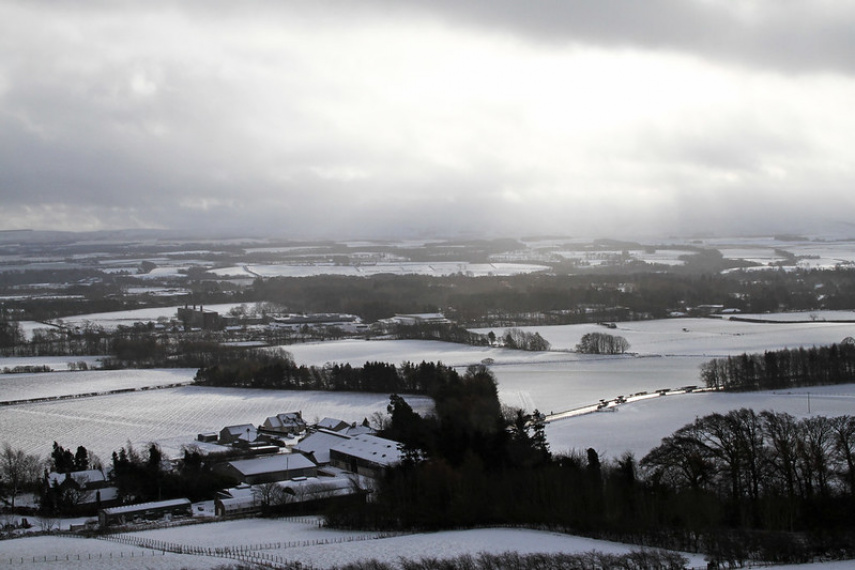
Land rights and responsibilities – When tenant farming and sporting meet
Bob McIntosh
In his latest blog, the Tenant Farming Commissioner, Bob McIntosh, looks at the rights and responsibilities where tenant farming and sporting meet.
Where two parties have different rights and responsibilities over the same area of land, communication and cooperation are essential to enabling a good working relationship. Where there are three different parties involved, such as landlord, sporting tenant, and agricultural tenant, communication is even more critical, and the likelihood of tensions arising between the different interests is indeed more likely. Thankfully, this doesn’t appear to be a widespread problem, but where it does occur it can seriously affect businesses. A tenant can feel that they are suffering excessive disturbance to livestock and to their farming operations from frequent passage of beaters, dogs, shooters, and vehicles over their holding, and undue damage from the rearing of game. A shooting tenant can feel aggrieved that it has become difficult to exercise their rights without perceived aggravation.
I usually hear about problems relating to sporting activities on estates that have large shooting operations or where sporting activities have intensified ̶ sometimes where a new commercial shooting operation has started up. Tenants who were used to seeing a relatively small number of game birds on their holding sometimes find themselves in a situation where there are literally thousands of bought-in birds being released.
Problems reported include birds pecking silage bales, rat infestation, grazing damage, disruption due to an increasing number of shoots per week, damage to fences, tenants not moving livestock, and sporting tenants not wanting a farm tenant to exercise their right to shoot marauding deer. These can cause or exacerbate poor relationships between tenant, landlord, sporting tenant, gamekeeper and factor – and often have financial consequences.
The problems associated with rearing of large numbers of pheasants appear to be similar on estates throughout Scotland, but problems with red deer, which may be additional to reared game, seem to be more location-specific and, from my experience, more prevalent in the north of the country. Localised deer numbers appear to be on increase due to lack of culling or increasingly as a result of displacement due to woodland creation.
In the case of deer, a farm tenant has a statutory right to take or kill any deer found on arable land, improved permanent pasture, land which has been regenerated so as to be able to make a significant contribution to the productivity of the holding, or enclosed woodland. However, the farm tenant only has that right where they have reasonable grounds for believing that serious damage will be caused to crops, pasture, or human or animal feedstuffs if the deer are not taken or killed. In some situations, it might be possible to demonstrate a need for control by providing, for example, photographs of deer on the land and of grazed crops. In most cases this sort of evidence is enough to persuade the landlord to take action.
The general position is that when a tenant takes on a lease, there is an expectation that they will accept the level of game, and any game damage which exists, at the time. However, if the level of game, and associated damage, on the holding increases significantly during the term of the lease then the tenant has the right to claim compensation from the landlord for the damage done by that increased level of game.
However, the process of establishing a claim for damages is not simple. The tenant must give notice in writing to the landlord of the occurrence of damage as soon as practicable after the damage has been first observed, and the tenant must give the landlord a reasonable opportunity to inspect the damage. A claim for damage must be given within six months of the date when the landlord was notified about the damage.
Establishing the extent and value of damage is not straightforward, but I would encourage tenants who find themselves in this situation to submit a claim. It might be necessary to take videos, including night-time videos taken with a thermal imaging device, to demonstrate an increase in numbers of deer using the land. It could also be necessary to employ an agent to value the loss of grass or crops, and this could involve marking plots in the field to establish the extent of the damage. At present, as far as I can tell, successful claims for damages are rare, but the more people who start to measure losses, the easier it will be for others to follow suit. I am monitoring the situation and have raised concerns with Scottish Government officials who now have a watchful eye on the issues relating to agricultural damage arising from management practices for stocking game birds and marauding deer.
Further information on managing tripartite relationships can be found in my Code of Practice on the Management of Relationships Between Agricultural Tenants and the Holder of Sporting Rights, available on the Scottish Land Commission’s website. I particularly recommend using the Memorandum of Understanding to agree the ground rules under which rearing and shooting will take place. As always, please do get in touch if there is an issue that you would like to discuss. I can be reached via the Scottish Land Commission on 01463 423 300 or at tfc@landcommission.gov.scot.
